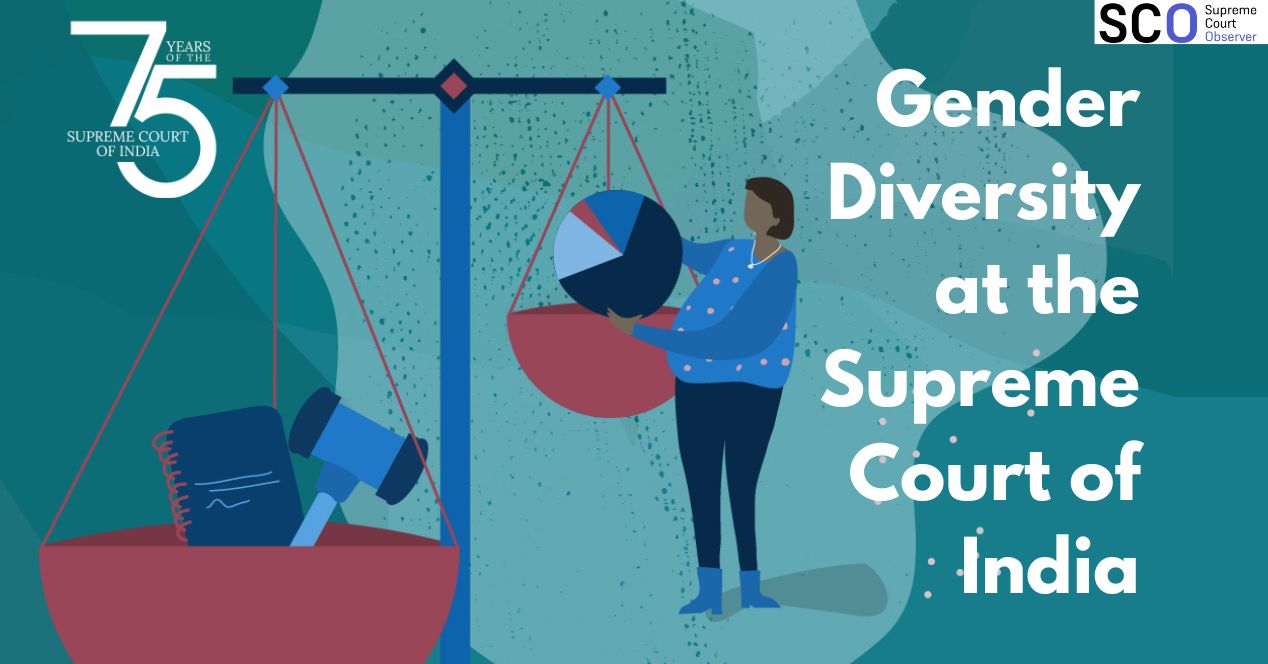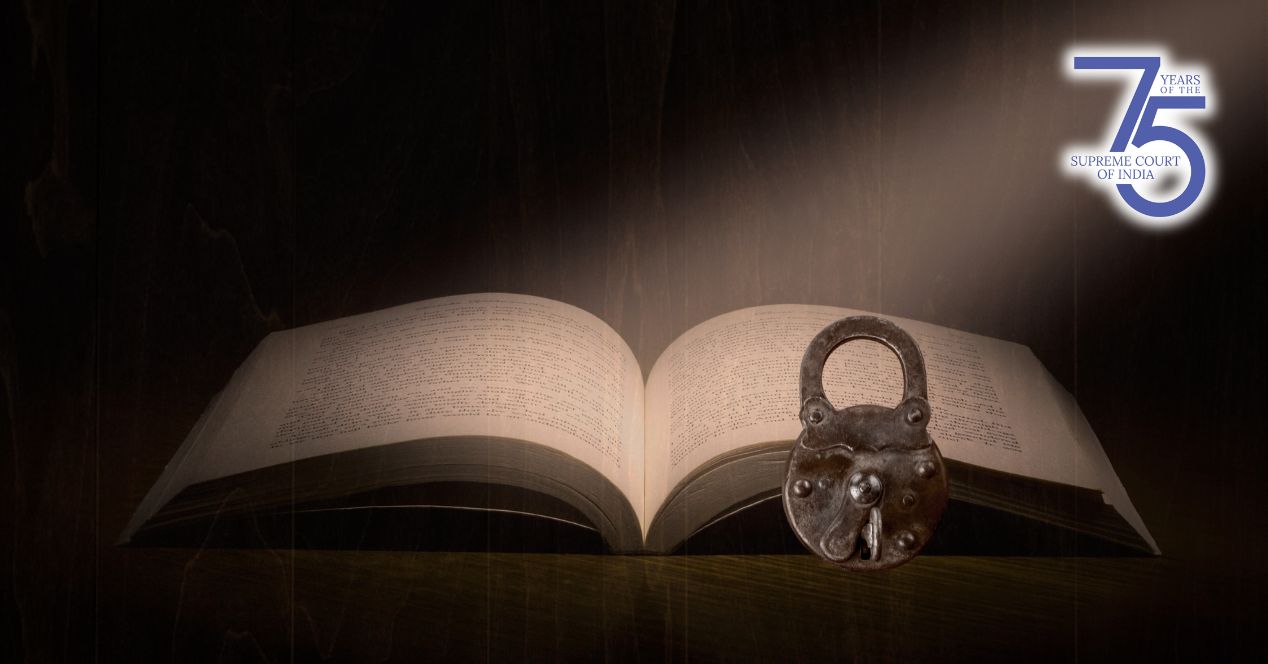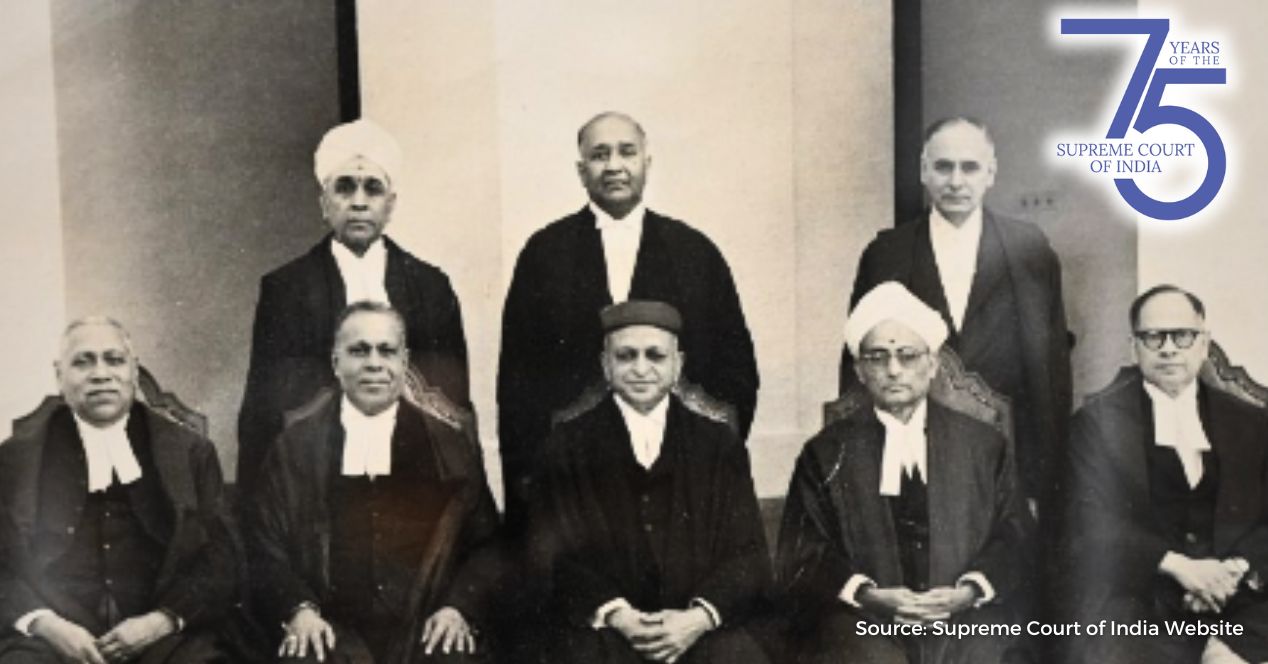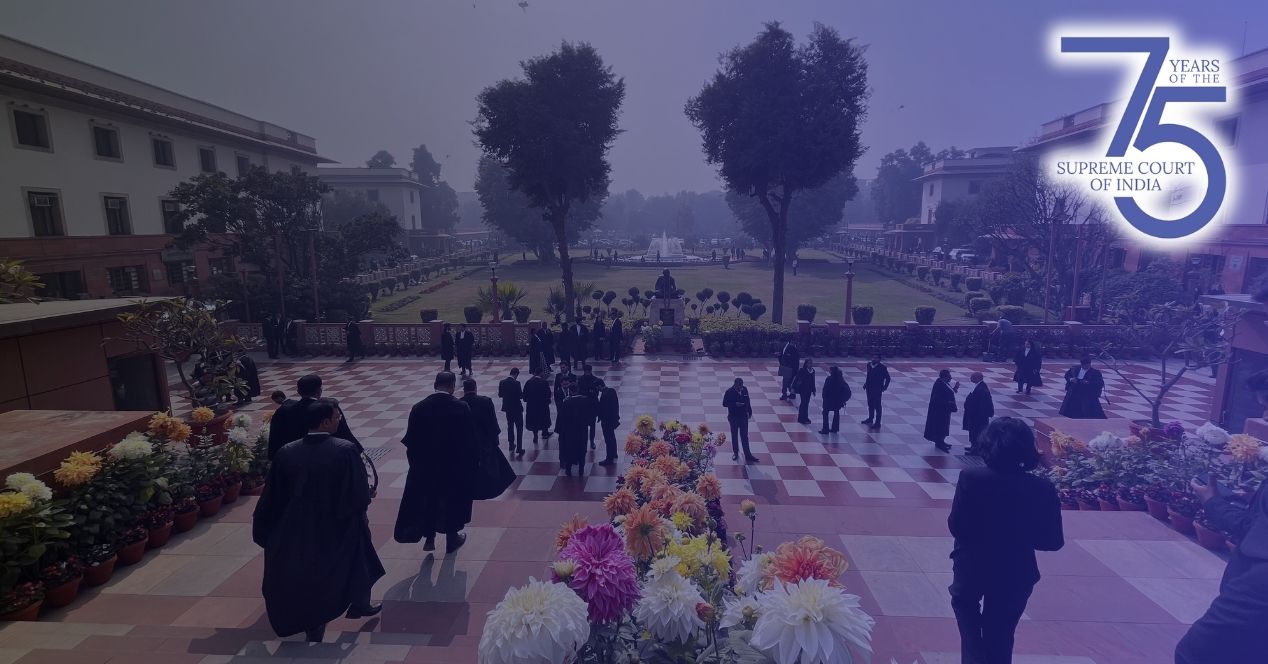Master of the Roster: Securing Process Legitimacy of the Supreme Court
As the SC turns 75, we analyse rostering under Chandrachud and Lalit courts and make a case for a publicly defensible allocation rationale
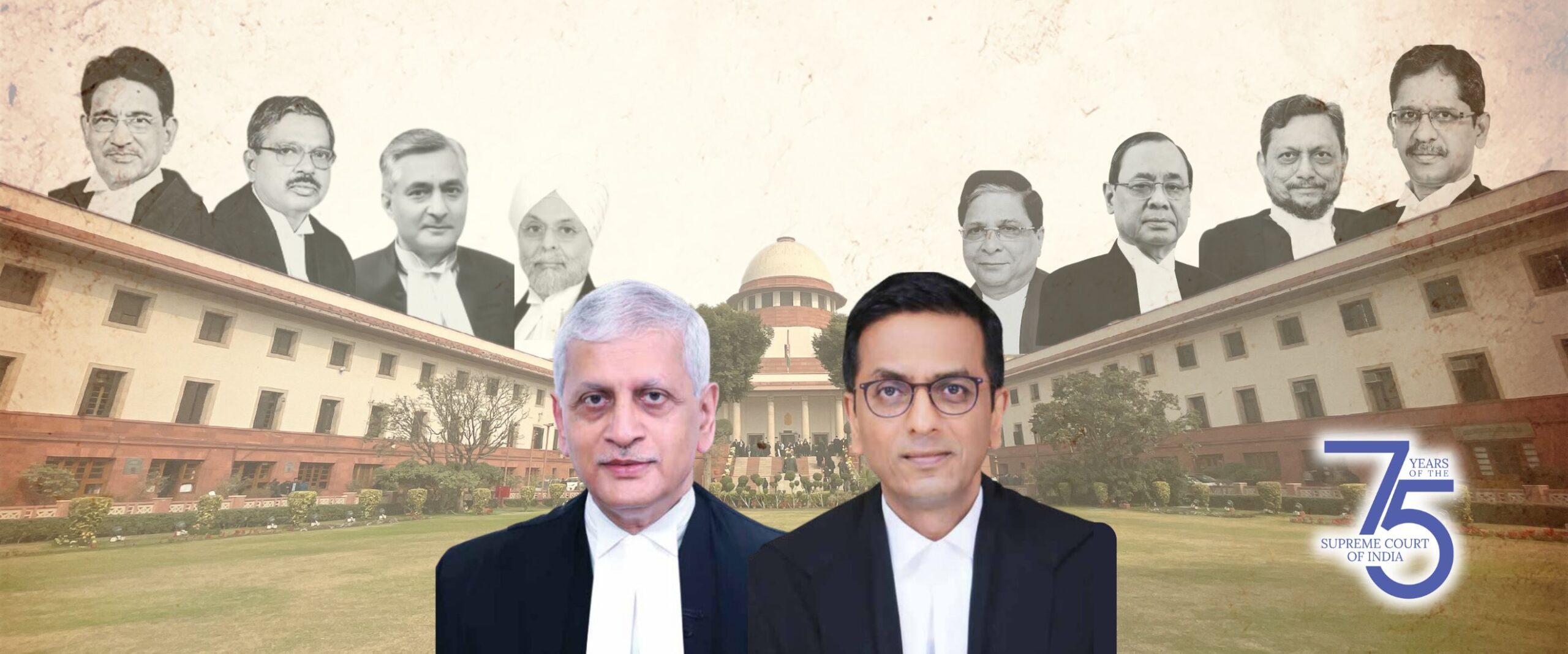
In December 2021, India’s northern neighbour Nepal dismantled and moved away from the ‘master of the roster’ system. ‘Master of the roster’ (MOR) refers to the Chief Justice’s power and privilege to pick and choose benches to hear cases. The then Chief Justice Cholendra Shumsher Rana was accused of using his MoR powers to secure favours from the government.
Two years later, the Supreme Court of Pakistan upheld the Supreme Court (Practice and Procedures) Act, 2023, which diminished the power of the Chief Justice as the MoR. This law was enacted after Chief Justice Umar Ata Bandial was accused of favouring the government of the day.
The Indian Supreme Court is no stranger to MoR controversies but is yet to address this issue. In 2018, four senior judges convened a press conference to publicly challenge Chief Justice Dipak Misra’s allocation of “sensitive cases” to junior judges. It was an extraordinary public expression of discord in the highest court. An impeachment motion initiated against CJI Misra subsequently dissipated for lack of support.
Some administrative developments did emerge from this episode. A month after the press conference, the Judges Roster was made public by CJI Misra. A new page on the Court’s website displayed the allocation of cases filed after February 2018. This improved transparency but it did not address the existential question around the MoR system: should allocation be left entirely to the Chief Justice or should it have a rationale that is publicly disclosed and justifies all future allocations?
The 75th anniversary of the Supreme Court is an opportune time to revisit these issues. In this essay, we first identify what the current Supreme Court Practice Manual says about rostering. Next, we review the allocation of Constitution Bench cases by CJI Lalit and CJI Chandrachud. We show that recent court practice supports a model of case allocation that may be publicly articulated to secure long-term procedural legitimacy of the Indian Supreme Court.
Why is the Chief Justice considered the Master of the Roster?
When the Court was established in 1950, the eight judges sat ‘en banc’—in other words, they sat together to hear every single case. Allocation became relevant from the mid-1950s, when the strength of judges increased and separate benches were constituted. Parliament has increased the sanctioned strength of the Supreme Court six times in the last 75 years. Today, a full strength Court comprises 34 judges.
While the phrase ‘master of the roster’ is used colloquially in various common law jurisdictions, it’s not been defined in any Indian legal instrument. Chapter Six of the Handbook of Practice and Procedure and Office Procedure 2017 sets out the powers of the CJI and the Registry with respect to the allocation. It directs the Registrar to prepare the roster under the “orders of the Chief Justice”. It provides that the Chief Justice may, from time to time, direct the Registrar to amend the roster and re-allocate judicial work. Notably, Chapter Six does not lay down a substantive rationale for the allocation.
If a visitor to the Supreme Court website clicks on the Judges Roster tab, they will find subject categories assigned to a limited number of senior judges. The edition that we have primarily relied on for this analysis was released on 2 January 2024 and allocated subjects to the 16 senior-most judges of the Court at the time.*
The roster reveals that Justice Sanjiv Khanna may handle criminal matters, company law, and Special Leave Petitions related to arbitration law, among others. Justice B.V. Nagarathna will hear cases on direct and indirect tax, criminal matters, and consumer protection. Subject categories are not exclusive to individual judges and may be assigned to multiple judges. For example, Justices A.S. Oka and Nagarathna have both been assigned cases related to indirect taxes.
This roster is prepared by the CJI and the Registry in the manner prescribed above. Fresh cases are automatically assigned to judges based on this roster. The rationale behind the assignment of a specific subject matter assignment to a particular judge isn’t explicit. Some critics claim that rostering is arbitrary or whimsical. Court on Trial, a recent book on the Supreme Court, suggests that rostering is “strategic” and “consistent with the hypothesis that the MoR power is deployed with a view to influencing outcomes.” This claim is supported by the authors’ finding that the CJI rarely finds himself in a minority in Constitution Bench decisions.
Court on Trial analyses data from 1950 to 2020. There have been significant developments in court practice since. In this essay, we focus our attention on the period from July 2022 to June 2024. There have been 35 Constitution Benches constituted during the tenures of the current Chief Justice D.Y. Chandrachud and Chief Justice U.U. Lalit who preceded him. We begin by reviewing rostering under CJI Lalit.
A discernible pattern in Chief Justice U.U. Lalit’s approach
As soon as Justice Lalit took charge in August 2022, he allocated 25 cases to Constitution Benches. In his 74-day tenure, seventeen Constitution Bench matters were listed, including three that were not in the initial list of 25.
Table 1 below sets out the composition of Constitution Benches for the 17 cases heard and decided.**
Let’s try and make sense of Justice Lalit’s rostering of judges in Table 1. The Supreme Court had 30 judges at the time. Each of them sat on at least one Constitution Bench. Each of the six senior-most judges—by ‘rank seniority’—led a Constitution Bench. Rank seniority refers to the length of continuous service of an employee. A judge who is younger in age will be considered ‘senior’ to a judge who is older in age if they have been appointed earlier than the older judge.
Table 1 confirms that two factors drive the rostering of Justice Lalit’s benches: (a) the six senior-most judges will each lead a bench; and (b) all judges will get a chance to sit on a bench. So, the seventh senior-most judge will join Bench 1 led by Chief Justice Lalit and the eighth senior-most judge will join Bench 2 led by Justice Chandrachud, and so on. We may call this model of rostering the ‘Seniority Pools’ method.
In Table 2, we have rearranged the judges according to their rank seniority to make this point clearer. Table 1 more or less tracks with Table 2, in the sense that each bench constituted by Justice Lalit has a defensible distribution of senior and junior judges. Such an approach refutes allegations that the CJI may appoint junior judges to Constitution Benches to shape judicial outcomes. (Notably, CJI Lalit was in the minority in the EWS Reservation case.)
Having said that, Table 1 does not exactly correspond with Table 2. This makes it clear that Constitution Benches were not allocated exclusively on the basis of rank seniority. There are instances where the composition of benches does not strictly adhere to the distribution in Table 2, suggesting that CJI Lalit exercised discretion in allocation. For instance, Justice Ramasubramanian (Pool 3) ideally should have been the third senior-most judge on a bench. Instead, he was the fourth senior-most on the bench led by Justice Abdul Nazeer (Entries 9 to 11 in Table 1). Other judges who were reshuffled in a similar way are marked in bold in Table 2. This method allows the CJI to exercise some discretion while constituting benches according to the principle of rank seniority.
While it appears that allocation may be explained through seniority pools, there is little clarity on how specific cases are allotted to these Constitution Benches. We now turn to review the composition of Constitution Benches under CJI Chandrachud who assumed office in November 2022.
Unpacking CJI D.Y. Chandrachud’s judicial allocation
CJI Chandrachud promptly built on CJI Lalit’s initiative to constitute several Constitution Benches. This was a relief for court observers, as the administrative initiatives of a CJI have been rolled back by successors in the recent past.
From March 2023 to May 2024, the Supreme Court heard 18 fresh Constitution Bench cases: 11 were five-judge benches (Table 3); four were seven-judge benches (Table 4); and three were nine-judge benches (Table 5).
A cursory review of Tables 3, 4 and 5 confirms that CJI Chandrachud did not adopt the same Seniority Pools model developed by CJI Lalit. Notably, CJI Chandrachud led all of these Constitution Benches. In Table 6 below, before examining possible rationales for the rostering in this period, we list the number of times a judge was on a Constitution Bench in CJI Chandrachud’s tenure.
In Table 6, the first 18 judges up to and including Justice Narasimha include the 16 senior sitting judges named in the Judges Roster and Justices S.R. Bhat and S.K. Kaul, who retired in October and December 2023 respectively***. The judges starting from Justice Pardiwala and up to Justice Varale are not named in the subject roster—they may be classified as junior judges. The judges starting from and including Justice Murari are those who retired before October 2023.
We will now consider how Chief Justice Chandrachud’s rostering measures up against the following three rationales: seniority, subject matter, future institutional role.
Composition based on seniority
Apart from the fact the CJI has led each of the 18 benches, we find no clear pattern.
The two nine-judge benches dealing with the taxation of mines and minerals, and the state government’s power to regulate industrial alcohols, had more junior judges (5) than senior judges (4). The bench determining the nature of private property had six junior judges and three senior judges. Additionally, the senior judges allocated were not among the senior-most.
Yet, the composition of the three nine-judge benches suggests that the selection tracks the Seniority Pools approach. Two new judges who had not been on a Constitution Bench since CJI Chandrachud assumed office in November 2022 were also included. Additionally, relatively recent appointees got a chance to sit on the benches. But these nine-judge cases had more or less the same bench composition, leaving little room for newer judges. Moreover, judges who had consistently sat on five-judge bench matters were also included on the nine-judge benches.
In the seven-judge bench in the Aligarh Muslim University (AMU) Minority Status case, four out of seven were junior judges. The seven-judge bench determining the validity of sub-classification within Scheduled Caste and Scheduled Tribe communities had four senior judges out of seven. The seven-judge bench determining the validity of an unstamped arbitration agreement had five-senior most judges on the bench. Taken together, these three cases do not establish a clear pattern.
We extended our analysis of Seniority Pools to the five-judge Constitution Bench cases. At the outset, we see that the benches in three cases do not follow the Seniority Pools pattern of picking judges of different levels of seniority. The three cases are: the abrogation of Article 370, the plea for marriage equality, and the validity of electoral bonds.
For some of the other matters, we found that the Chief’s selection tracks the broader Seniority Pools groupings but his picks were restricted to a specific set of judges. Just twelve judges (out of 30-plus, at various times) got a chance to sit on more than one of the 11 five-judge benches. Four judges sat on five or more of the 11 benches: CJI Chandrachud (all 11), Justice Misra (9), Justice Pardiwala (6), Justice Narasimha (5).
As the Seniority Pools model was not strictly followed, we found that five out of the 11 matters had three or more junior judges.
CJI Chandrachud’s allocation for some of the five and nine-judge bench cases tracked the Seniority Pools groupings, but it was not a true expression of the Seniority Pools model since the cases were not equally distributed among the judges of the Court.
In the next section, we explore whether the allocation of cases maps onto the subject matter expertise of particular judges.
Subject-matter expertise
Judges are not elevated to the Indian Supreme Court explicitly on the basis of their expertise in a field. All judges are assumed to be generalists and expected to adjudicate on all types of cases. But the Judges Roster assigns cases of a particular type to a limited set of judges. Assuming the judges are experts in the subject matter they have been assigned, we can analyse whether expertise has been taken into account.
In the recent nine-judge bench cases, the Supreme Court looked into the state government’s power to tax mines and minerals. The Judges Roster at the time assigned the subject category of “Mines, Minerals and Mining Leases” to CJI Chandrachud, Justice Sanjiv Khanna and Justice Oka. However, Justice Khanna was not a part of the nine-judge bench.
The same bench heard a case on a state government’s power to regulate industrial alcohol. According to the Judges Roster, Chief Justice Chandrachud, Justice Bela Trivedi and Justice P.S. Narasimha have been assigned matters related to “Liquor Privileges, licences, distilleries and breweries”. However, neither Justice Trivedi nor Justice Narasimha were on the nine-judge bench hearing the industrial alcohol case.
According to the Roster published on 14 July 2023, matters pertaining to arbitration were assigned to CJI Chandrachud, Justices S.K. Kaul, Sanjiv Khanna, S.R. Bhat, and A.S. Oka. Yet, the seven-judge bench determining the validity of an unstamped arbitration agreement did not include Justices Bhat and Oka. These instances indicate that subject matter expertise may not be a factor in deciding the composition of at least some Constitution Benches.
Further, the subject matters of some Constitution Bench cases are not reflected in the Roster. Additionally, the subject that a matter falls under might be indeterminate in some instances. For instance, which subject or theme did the Aligarh Muslim University case fall under? Would the case on sub-classification have fallen under the “social justice matters” category or some other category? Moreover, junior judges are not listed in the Judges Roster.
For all these reasons, it is difficult to make conclusive claims on subject matter expertise being a factor influencing allocation.
Future institutional role of a judge
Lastly, we test whether CJI Chandrachud’s approach factors whether a judge will be a future CJI or has an extended tenure in the Supreme Court. Our assumption is that, from the point of view of institutional continuity and memory, the longer a judge’s expected tenure, the more Constitution Bench cases they will participate in. The table below lists the next eight CJIs and the number of Constitution Benches they have sat on so far in CJI Chandrachud’s tenure.
As set out in Table 7, CJI Chandrachud has been a part of all 18 cases. Interestingly, Justice Pardiwala has been a part of 12 Constitution Benches, the third-most after CJI Chandrachud and Justice Misra. Of the next eight future CJIs, Justice Pardiwala has the longest expected tenure as Chief Justice—2 years, 3 months. The next longest is Justice Surya Kant at 1 year, 2 months. Looking at Justice Pardiwala’s extensive participation, one could surmise that the CJI is considering expected tenure as Chief in case allocation.
But this line of conclusion is challenged when we look at the activity of the other future CJIs. Justices Khanna, Gavai and Narasimha, all of whom have a tenure of only six months, have sat on the same or more number of Constitution Benches than Justice Surya Kant. Justice Nagarathna, whose tenure as the first woman CJI will last only 36 days, has participated in three benches. Justice Viswanathan, appointed in May 2023, has not been a part of any Constitution Bench so far. As of July 2024, he was among the 11 sitting judges of the Supreme Court who had not yet been a part of a Constitution Bench.
In Table 8 below, we find that judges appointed with shorter tenures than Justice Viswanathan, who will spend close to eight years in the Court, have participated in more Constitution Bench cases. Due to the disproportionate distribution of cases among the judges who are in line to become CJIs, there is no discernible pattern to conclude that the CJI considers a judge’s future role as a Chief Justice while constituting a Constitution Bench. Now, let’s explore if the expected tenure of judges who are not in line to become CJI until May 2031 motivates their presence on benches.
From Table 8, let’s look at the two judges who have sat on the most Constitution Benches: Justice Manoj Misra (16) and Justice Hrishikesh Roy (7). Justice Misra was appointed in February 2023. We compare his Constitution Bench activity with Justice Dipankar Datta, who was appointed two months before him and has the same expected tenure (7.25 years). Justice Datta has sat only on one Constitution Bench compared to Justice Misra’s 16. Let’s now look at a judge who was appointed only three months after Justice Misra and has a comparably long tenure in the Court (6.25 years): Justice P.K. Mishra. Justice Mishra has not sat on a single Constitution Bench.
Among judges appointed in the same month as Justice Misra, Justices P.V. Sanjay Kumar, Ahsanuddin Amanullah, and Rajesh Bindal will serve a tenure of over five years. While Justices Kumar and Bindal have sat on a bench each, Justice Amanuallah hasn’t sat on a single one. To complicate the equation further, we only need to look at Justice Pankaj Mithal, who was appointed on the same day as Justice Misra. Even though he’s only expected to serve a tenure of 3.25 years, he’s sat on five Constitution Benches.
If we use Justice Roy as the yardstick (7 benches), we find that other judges who have a term equal to or longer than Justice Roy (5.25 years) have served on fewer or no Constitution Benches. These are Justice Datta (1), Justice Kumar (1), Justice Amanullah (0), Justice Bindal (1), Justice Mishra (0) and Justice Bhuyan (2). The other judge who falls in this category is Justice Misra, who has sat on nine benches more than Justice Roy.
The above analysis doesn’t reveal any pattern for us to conclude that the CJI considers the expected length of tenure to determine who will sit on Constitution Benches.
Why is Master of the Roster the key to procedural legitimacy?
Evidently, each Chief Justice approaches rostering differently. A Seniority Pools model is a defensible approach that could clarify how benches were constituted during CJI Lalit’s tenure. While he distributed cases equally among all sitting judges of the top court, there isn’t enough publicly available material to examine the reasoning behind allocating a specific case to a particular bench. (The Judges Roster from Justice Lalit’s tenure is no longer available on the Supreme Court website)
In CJI Chandrachud’s tenure, as of July 2024, there were 11 sitting judges who were yet to be allocated to a Constitution Bench. This included three judges who were already in the Court before he took charge as CJI. We’ve analysed how the composition of Constitution Benches in this tenure lacks a discernible pattern from three available rationales: seniority, subject matter expertise and future institutional role. There may be other approaches that could justify rostering in this period, but as there is no publicly available rationale we’re currently unable to explain these allocations. Engagement with key actors and ethnographic research may provide alternative explanations.
This analysis is important given the levels of public interest in rostering decisions. Recently, a segment of the Bar has suggested that the MoR may be abusing their power by assigning sensitive cases to particular judges. Another group contended that such accusations undermine the “honour and dignity” of the Supreme Court. There are suggestions to overhaul the system and make it “completely computerised” without the involvement of the CJI.
After the controversy in Nepal, a full court meeting excluding Chief Justice Rana decided to implement a lottery system to randomly allocate cases. The lottery system has the fallout of important cases landing on the desks of inexperienced judges. Judges in Nepal have acknowledged its flaws but consider it the best option in the circumstances. Pakistan has established a “Collegium-like” system where the Chief Justice and the two senior-most judges will decide bench composition and allocation.
In India, High Court and Supreme Court judges are appointed by a Collegium. However, suggestions to adopt a Collegium system for allocating cases have not been accepted by the Supreme Court. In Shanti Bhushan v Supreme Court of India (2018), the Court held that the Chief Justice exercises their powers of allocating cases “by consultation and consensus, after taking into account various factors including individual Judges’ interests and abilities, their specialisation in a particular area, their capacity to handle particular types of cases and many other relevant considerations.” The Bench observed that a Collegium system would be untenable from a logistics point of view, as it would require the Court to convene daily to discuss allocation.
In our view, neither the lottery system nor the Collegium system is a particularly compelling alternative to the MoR. Our view is that the Indian Supreme Court should retain the MoR system while developing an articulate public rationale for bench composition and case allocation. The rationale should prioritise predictability while leaving some discretion with the CJI. The Seniority Pools approach adopted by Justice Lalit during his tenure is a potential starting point. This would protect the Court against the charge that its decisions are shaped by ideological or political preferences. The consequent enhancement of the Court’s legitimacy would be a fitting tribute to its 75th anniversary.
*The Roster was updated on 29 July 2024, following the retirement of Justices Aniruddha Bose and A.S. Bopanna. That edition of the Roster contained the names of Justices Sudhanshu Dhulia and Dipankar Datta, who were not among the 16 senior-most judges at the time. Justice Pardiwala, who was the 15th senior-most, was also not on the Roster.
**Many of these cases were heard and decided after CJI Lalit retired in November 2022. The bench composition in the cases were determined by CJI Lalit and were not changed after he retired.
***We referred to the Judges Roster that was active from 2 January 2024 to 29 July 2024.

